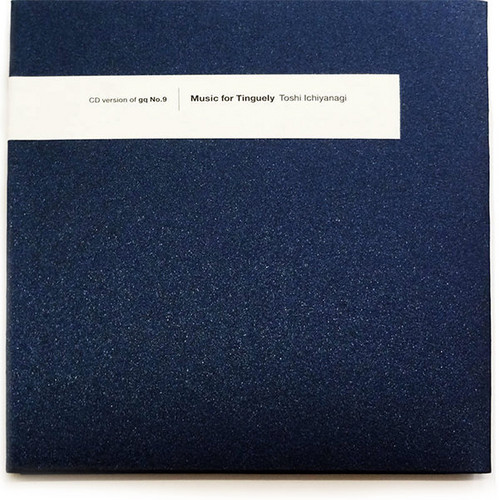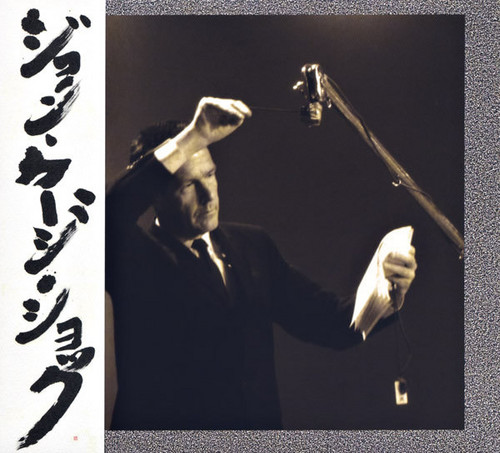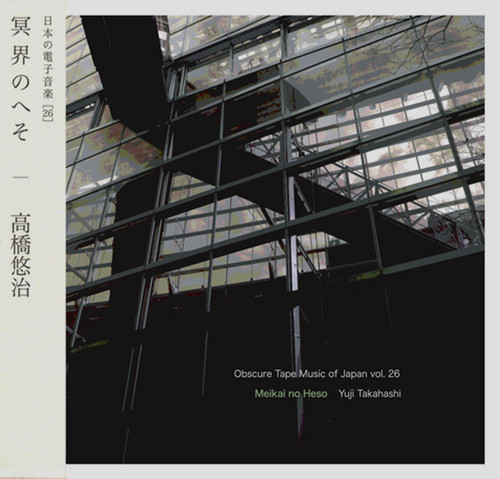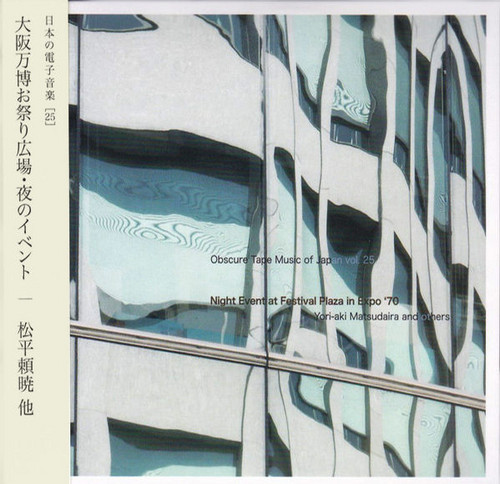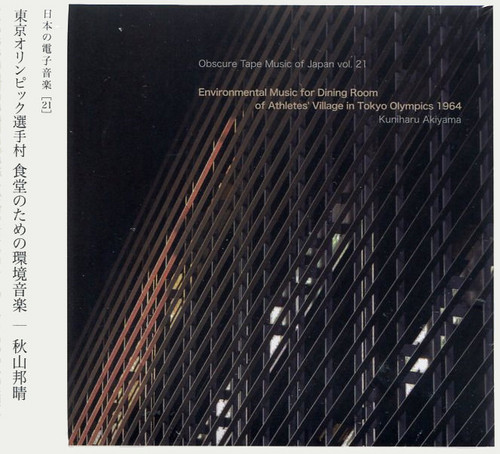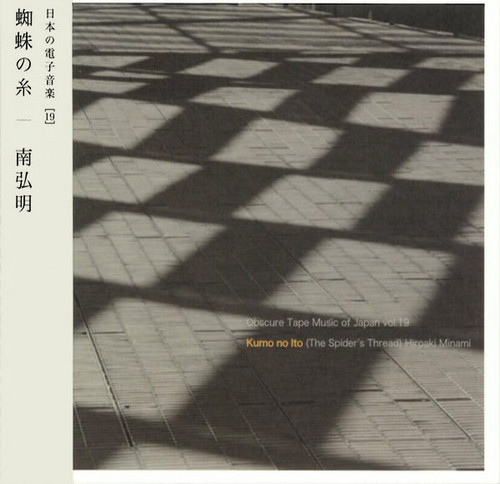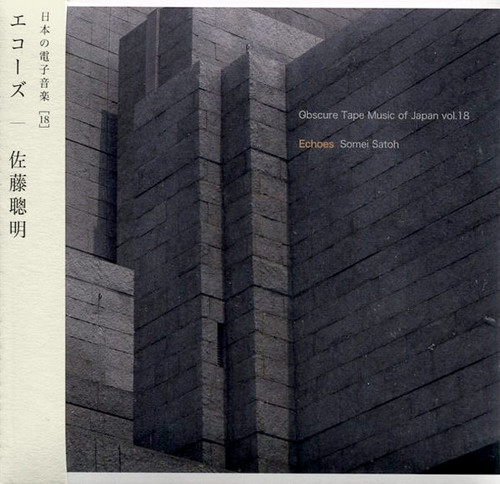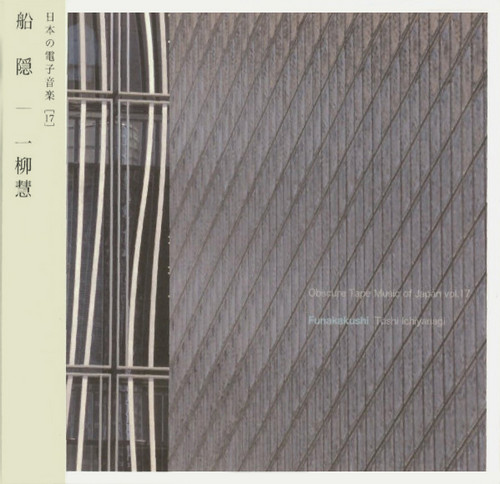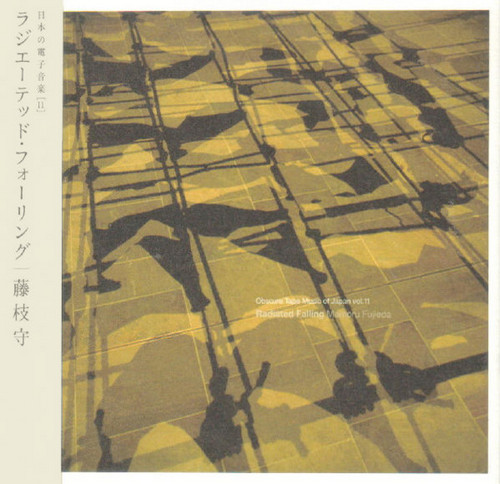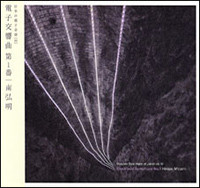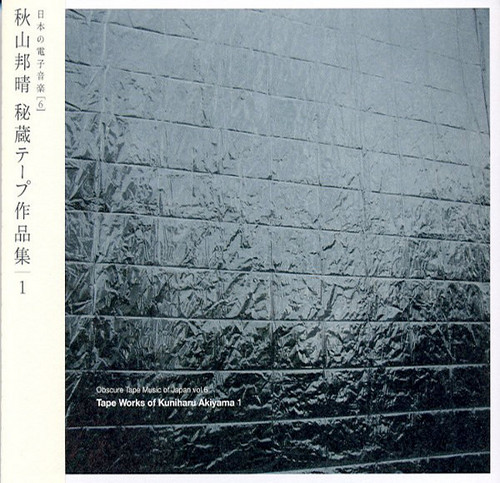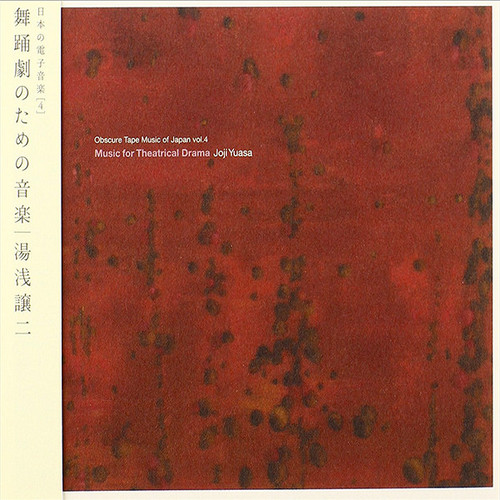Back in stock
Adam’s Apple To Super Nova "Revisited“
“The word ‘jazz,’ to me, only means I dare you.” - Wayne Shorter
Music for Tinguely
CD only version by the 'GQ' legendary magazine issued in 1970's. Comprised of rare sound materials from Toshi Ichiyanagi's Music For Tinguely, released here for the first time ever. Also includes the track released on OPA 005CD. Toshi Ichiyanagi is a well-renowned Japanese avant-garde composer who made brilliant pieces of tape music. Most of his works have not been issued on CD, or have only been issued in very small editions. Housed in a cardboard paper gatefold sleeve. Newly-written liner note…
Toshi Ichiyanagi, A Pianist
Limited 80 copies. V.A “Toshi Ichiyanagi, A Pianist” (special edition) CD+CDR
1_Table tennis performance at Katsumi Asaba Exhibition / 2009 / 13’57”Influenced by Asaba, who even coached a Japanese national team player, Ichiyanagi is also known as a very good table tennis player. A ping-pong table was also brought to the event and a demonstration was held before Ichiyanagi's performance. A contact microphone was attached to the ping-pong table where audience members, as well as Ichiyanagi, played…
John Cage Shock Vol. 3
The final CD of the John Cage Shock series features John Cage's 0'00" (1962), also referred to as 4'33" No. 2, performed by the composer, with daily activities such as writing and drinking coffee amplified by contact microphones into sonic abstraction, following the score's directions: "with maximum amplification (no feedback), perform a disciplined action." Next is Composition II for 2 Pianos (1960/1961) by Michael von Biel, lovely and sparse, performed by David Tudor and Toshi Ichiyanagi. …
John Cage Shock Vol. 1
In October 1962, John Cage and his great interpreter/co-visionary David Tudor visited Japan, performing seven concerts and exposing listeners to new musical worlds. This legendary "John Cage Shock," as it was dubbed by the critic Hidekazu Yoshida, is the source of this series of releases -- three CDs and a "best hits" double LP compilation. Recorded primarily at the Sogetsu Art Center in Tokyo on October 24, 1962 (with two performances from October 17 at Mido-Kaikan in Osaka), all recordin…
Obscure Tape Music Of Japan Vol. 26: Meikai no Heso
A collection of small tape music pieces by the legendary composer and pianist Yuji Takahashi. All of them are premiere release on disc.tr.1 Meikai no Heso (The Umbilicus of Limbo, 1963) It is also known as Window to Antonin Artaud, or The Umbilicus of Limbo. it was performed in a version of tape and instruments - poetry reading of the French poet Antonin Artaud, which was modified on the tape, and bass instruments as well as percussion instruments. This is a live recording of Musicians Group: Ne…
Obscure Tape Music Of Japan Vol. 25: Night Event At Festival Plaza In Expo '70
At the World Exposition held in Osaka in 1970, many multi-media works such as experimental music were presented at different pavilions. Some of the recordings were released on discs, however, the information was lacking what music was produced for what event held at the Festival Plaza. Although many sound sources were lost, we managed to analyze some part of treasurable recordings that were still available! tr.1 "Flag, Flag, Flag and Plaza of Light" (music: Yori-aki Matsudaira) The event was a …
Environmental Music for Dining Room of Athletes' Village in Tokyo
From participation in the early Fluxus to giving an introduction of Futurism, Kuniharu Akiyama (1929-1996), a renowned music critic, was involved in a vast range of activities. Particularly in the 1960s, he recorded a lot of music on tape for himself. To our surprise, the music compiled on this CD was actually discovered from a series of ambient music pieces played in the Athletes’ Village at the Tokyo Olympics! During this period, Akiyama was fascinated by the sound of Sanukite stone from Sanuk…
Shikisokuzekuu-Kuusokuzeshiki
The details of Shikisokuzekuu-Kuusokuzeshiki (1964) are unknown except that it was created at the NHK electronic music studio. According to Toshi Ichiyanagi, there were various discussions about the title, but it would seem to have been eventually broadcasted on the radio with the title Kuu after a producer renamed it. Here, the original title is used, following Ichiyanagi's initial intention. This work has no relation to the short experimental film Shikisokuzekuu (1974), produced by filmmaker T…
Obscure Tape Music of Japan, Vol. 19: Kumo no Ito (The Spider's Thread)
"Kumo no Ito" (trans. "The Spider's Thread): "In 1977 I started the project of a musical piece for a female narrator and 4-channel electronic sounds using the text of the well-known Akutagawa novel. I worked with a hand-made analog synthesizer which had been installed two years before in my home studio in Tokyo. Needless to say, the editing was done without digital machines. I worked with the recorded tapes together with scissors and splicing tape. It was the resonance-adding apparatus tha…
Echoes
*2022 stock* "'Emerald Tablet' was recorded at the NHK electronic-music studio in 1978. It is made up of only the sonic ingredients of a tubular bell, cymbals, and 'kin,' a largish-sized bell used for Buddhist memorial services in Japan. The attack of the sound of each instrument was eliminated, and the work was taped through repeated overdubbing. This produced a variety of beautiful harmonics that otherwise could not be produced from a single instrument's sound, and the interference of harmonic…
Funakakushi (1963)
**2022 stock "Funakakushi" [1]: This electronic work was composed for the opening ceremony of the hotel "Funakakushi-en" in Kagawa prefecture in 1963. It was realized as a sound installation and used many speakers inside a built-in stone sculpture. They were designed by sculptor Mitsu-aki Sora (b. 1933) and were arranged here and there in the main garden of the hotel. The sound was made from a modified Japanese traditional instrument, biwa, as well as from a sea wave sound [2]. The engineer Juno…
Obscure Tape Music Of Japan Vol. 12: Miniatures Of Concrete Works
Edition Omega Point presents work by legendary Japanese composer Joji Yuasa -- one of most important composers in Japan after World War II. "Nadja, Twincling in Stars" (1963) is the incidental music, by NHK Radio, based on "Nadja" by Andre Breton who made "Declaration of Sur-Realisme." The actual chart of constellations was played by three players (violin, piano and vibraphone) which was used as the music score. Birdsong, electronics, and sound generated from inside the piano using music c…
Radiated Falling. Obscure Tape Music of Japan vol. 11
Mamoru Fujieda is a Japanese post-minimalist composer, and Edition Omega Point releases some of his work from the early '80s. Both "Radiated Falling" (1980) and "The Art Of Fugue" (1981) are tape compositions in which sound materials of a prepared piano are electronically-processed and modulated in various ways. "Radiated Falling" is based on "Falling Scale No. 2" for piano (1975). The series of works entitled "Falling Scale" are composed almost entirely of descending scales as their stru…
Electronic symphony No.1
Little-known composer Hiroaki Minami was a professor of electronic music at the Tokyo National University of Fine Arts & Music and is a pioneer of synthesizer music in Japan. He built a private studio for his self-made synthesizer in his home in 1976, and shortly thereafter, he composed this piece, Electronic Symphony No. 1, filled with spacey and very noisy analog synthesizer sounds, much like Roland Kayn's '60s concrète works. Contains liner notes by the artist in Japanese and English; h…
Music for experimental films. Obscure Tape Music of Japan vol. 7
This is volume 7 of Omega Point's Obscure Tape Music of Japan series. Many avant-garde composers made soundtracks for experimental film-maker Toshio Matsumoto. This CD consists of Joji Yuasa's three musique concrète works for his 1960s and 1970s short films. The first track features a heavily broken and meaningless narrator for the short film Andy Warhol: Re-Reproduction (1974); "Document Of The Long White Line" is an obscure, early electronic sound collage with chamber orchestra, and "Auto…
Tape Works of Kuniharu Akiyama. Obscure Tape Music of Japan vol. 006
Kuniharu Akiyama (1929-1996) was well-known as a music critic, mainly of modern and contemporary music. However, his career was not only in the music field -- he was also a very well-regarded avant-garde artist (he especially related to the early Fluxus movement). This release consists of his three unknown tape music pieces. They are very strange. Excerpt from the liner notes: "'Environmental Mechanical Orchestra' (1966) was made for an exhibition called 'From Space to Environment,' carried out …
Music for theatrical drama. Obscure Tape Music Of Japan – Vol.4
This is volume 4 of Omega Point's newly-reissued Obscure Tape Music of Japan series, featuring two early works of music concrète composed for theatrical drama by legendary Japanese composer Joji Yuasa. The sounds on this recording, especially of "Oen" is so experimental and strange, but this music was not for avant-garde theater. "Mittsu No Sekai" contains elements of a mechanical beat (suggestive of a machine civilization) that could be the precursor to industrial music. Composed for the …
Music for Puppet Theatre of Hitomi-Za
This is volume 2 of Omega Point's Obscure Tape Music of Japan series. Hitomi-Za is an experimental puppet theater group that still exists today in Japan. This recorded performance took place from February 13-17th in 1962 at Sogetsu Kaikan Hall. The program consisted of three parts, and Joji Yuasa, Kuniharu Akiyama and Naozumi Yamamoto composed background sound for each part. This CD consists of two works made from magnetic tape from among the performances. This is the world premiere release of b…
Aoi no Ue. Obscure Tape Music of Japan vol. 1
Volume one of Omega Point's Obscure Tape Music of Japan series, featuring Joji Yuasa's "Aoi-no-Ue" (1961) and "My Blue Sky" (1975). Joji Yuasa (b. 1929) is one of most important composers in Japan after World War II. "Aoi-no-Ue" was composed for experimental theater at Sogetsu Art Center. The sound of this work is made from the chants of Japanese traditional "Noh" theater. "The text is recomposed by me keeping the original words. And it was sung in the style of Noh-chant by three brothers ... Th…

